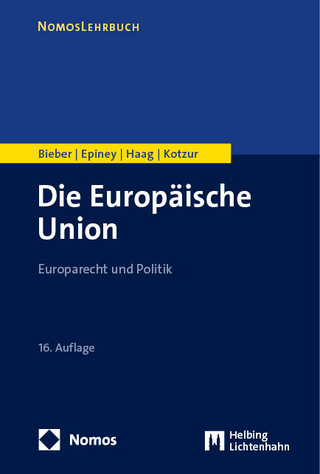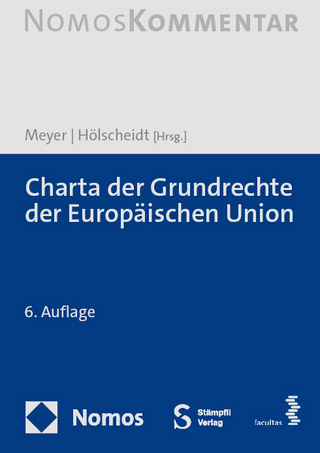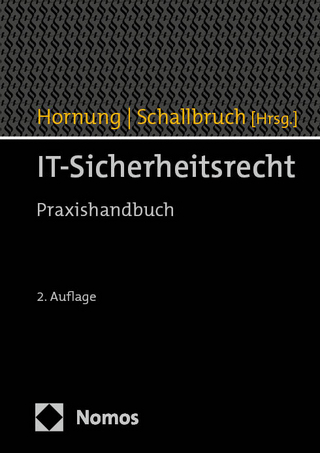
The Legal Status of the Financial Action Task Force in the International Legal System
Martinus Nijhoff (Verlag)
978-90-04-71512-7 (ISBN)
- Noch nicht erschienen (ca. Dezember 2024)
- Versandkostenfrei innerhalb Deutschlands
- Auch auf Rechnung
- Verfügbarkeit in der Filiale vor Ort prüfen
- Artikel merken
The FATF challenges traditional axioms and patently illustrates the dynamics of the international legal system. This book fills a significant gap in academic literature by studying FATF’s legal nature and its responsibilities in the international legal system as an organisation with public authority. It makes a bold argument that the FATF has gradually evolved into an international organisation, addressing international law and international organisation law discourse, combining theory and practice.
This book’s analytical framework can be applied to any organisation whose legal nature remains undefined, attempting to provide clarity and legal certainty in the international legal system’s architecture of the 21st century.
Ilda Cristina Ferreira, PhD (2023) University of Hong Kong, jurist in international law of the Macao SAR, lecturer at the University of Macau. She has published articles on international law, transnational criminal law, legal co-operation and human rights in the context of the Macao SAR.
Preface
Acknowledgements
List of Abbreviations
1 Introduction
2 Description of the Financial Action Task Force
1 Historical Background and Raison d’ Être
2 Legal Nature and Mandate
2.1 Character and Mandate
2.2 Lifespan
2.3 Legal Nature
2.4 Political Accountability
3 Internal Legal Order
3.1 The fatf Bodies
3.1.1 The Plenary
3.1.2 The President
3.1.3 The Steering Group
3.1.4 The Secretariat
4 Membership, Affiliation and Observers
4.1 Membership
4.2 Associate Membership
4.3 Observers
5 Budgetary Matters
6 Policy and Lawmaking Powers
6.1 fatf Recommendations
6.2 Typologies, Best Practices and Guidance Papers
7 Monitoring and Sanctioning Powers
7.1 Mutual Evaluation Process
7.1.1 Common Methodology
7.1.2 Follow-up Process
7.1.3 The 5th Round of Mutual Evaluations
7.2 Sanctioning Power: ‘Name and Shame’ Policy and Countermeasures
7.2.1 Non-cooperative Countries and Territories
7.2.2 The fatf’s Grey and Black Lists
7.3 Technical Assistance
8 The fatf Regional Bodies
8.1 The Caribbean Financial Action Task Force
8.2 The Asia-Pacific Group on Money Laundering
8.3 The Council of Europe Committee of Experts on the Evaluation of Anti-Money Laundering Measures and the Financing of Terrorism
8.4 The Eastern and Southern Africa Anti-Money Laundering Group
8.5 The Inter-Governmental Action Group against Money Laundering in West Africa
8.6 The Financial Action Task Force of Latin America
8.7 The Task Force on Money Laundering in Central Africa
8.8 The Eurasian Group on Combating Money Laundering and Financing of Terrorism
8.9 The Middle East and North Africa Financial Action Task Force
8.10 Some Singularities
9 External Relations
9.1 International and Regional Co-operation and Third Countries
9.1.1 The imf and the wb
9.1.2 The un/unsc
9.1.3 The G-20
9.1.4 Third Countries
9.2 Private Sector and Civil Society Outreach
9.2.1 Private Sector
9.2.2 Civil Society Outreach
3 International Organisations
1 Definitions and Criteria
1.1 ‘Common Characteristics’, Nuances and Diversity of Design Patterns
1.2 Sui Generis Cases
1.2.1 The Inter-parliamentary Union
1.2.2 The International Criminal Police Organisation
1.2.3 The General Agreement on Tariffs and Trade
1.2.4 The Commonwealth
1.2.5 The Nordic Council
1.2.6 The Organisation for Security and Co-operation in Europe
1.2.7 The Black Sea Economic Co-operation
1.2.8 The European Union
1.3 Finding Common Ground among International Organisations
2 io s as Subjects of International Law and Theoretical Approaches
2.1 International Personality and Capacity
2.2 Theoretical Approaches to International Personality
2.3 The icj Opinion in Reparation of Injuries Suffered in the Service of the UN
3 Summary
4 The Financial Action Task Force as an International Organisation
1 A New Perspective on the Legal Status of the fatf
2 Membership
3 Created under International Law
3.1 The Constitutional Framework of the fatf
3.2 The High-Level Principles and Objectives for fatf and fatf-Style Regional Bodies
4 An Organ of Its Own with a Distinct Will
4.1 fatf’s Reports and Action Plans
4.2 High-Level Missions or Letters to Governments
4.3 Public Interventions and Statements
5 To Operate on the International Plane according to International Law
5.1 Key Institutional Decisions and Actions
5.1.1 Core Institutional Change
5.1.2 The Relationship between the fatf and the fsrb s
5.1.3 The Global Network
5.1.4 The Brand and Reputation Issues
5.2 Key Regulatory and Operational Actions and Their External Impact
5.2.1 The fatf Recommendations and Their Normative Dimension
5.2.2 Emergence of Customary International Law
5.2.3 Mutual Evaluation Process and Blacklisting
6 External Recognition by Other Subjects of International Law
6.1 The fatf’s Legal Status and External Participation
6.2 fatf’s Institutional Participation
6.3 fatf’s External Impact in other io s and International Institutions
6.3.1 The Council of Europe
6.3.2 The European Union
6.3.3 The unsc and Other International Institutions
7 The Relevance of the Will of the Members
8 Summary
5 Relevance and Challenges
1 Why Does the fatf Case Matter? Why Is It Relevant to International Institutional Law and International Public Law?
1.1 The fatf as an Institutional Model
1.1.1 The Asia-Pacific Group on Money Laundering
1.1.2 Global Forum on Transparency and Exchange of Information for Tax Purposes
1.1.3 fatf Cyber-Style Security Body Proposal
1.2 The fatf as a Model at Operational Level
1.3 The fatf Regime as a Model for Other Regimes of Global Concern
2 Implications and Challenges as a Subject of International Law with Public Authority
2.1 The fatf as a Subject of International Law and Public Authority
2.2 fatf’s Exercise of Public Functions, Gaps and Improvement
2.2.1 The ‘Club-Member’ Character
2.2.2 Unbalanced Relationship with the fsrb s’ Jurisdictions and Risk of Detachment
2.2.3 Accountability, Sovereignty, Transparency
2.2.4 Unintended Consequences
3 Summary
6 Conclusion
Bibliography
Index
| Erscheint lt. Verlag | 19.12.2024 |
|---|---|
| Reihe/Serie | International and Comparative Business Law and Public Policy ; 7 |
| Sprache | englisch |
| Maße | 155 x 235 mm |
| Gewicht | 1 g |
| Themenwelt | Recht / Steuern ► EU / Internationales Recht |
| Recht / Steuern ► Öffentliches Recht ► Völkerrecht | |
| ISBN-10 | 90-04-71512-6 / 9004715126 |
| ISBN-13 | 978-90-04-71512-7 / 9789004715127 |
| Zustand | Neuware |
| Haben Sie eine Frage zum Produkt? |
aus dem Bereich


